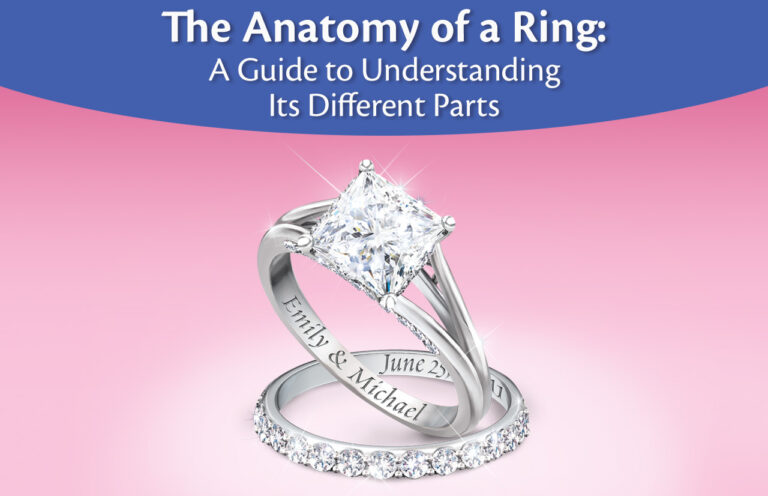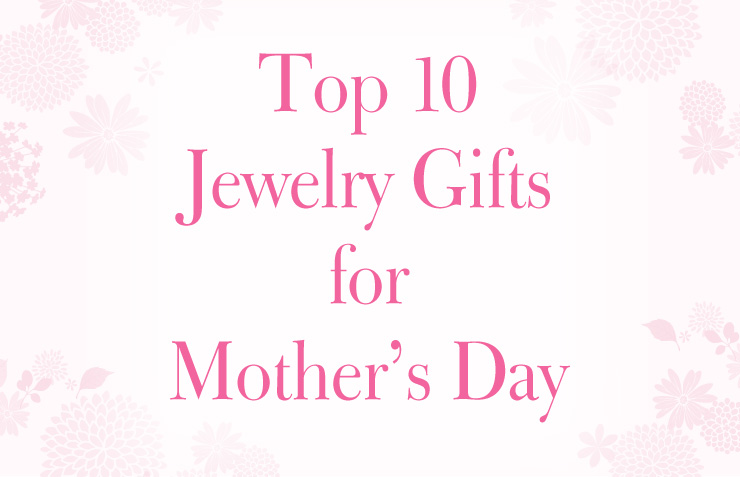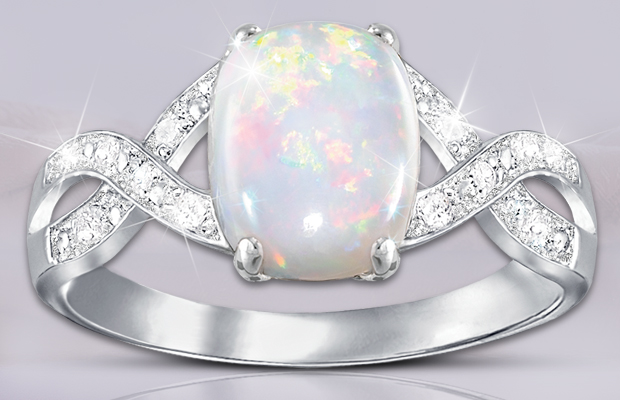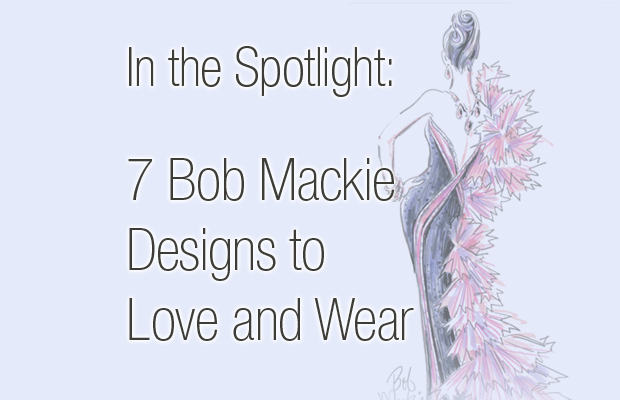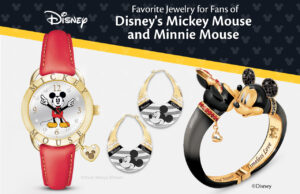How many of you remember anatomy class? While some memories from that portion of our education may have faded, the Cliffs Notes of Anatomy class is only one word: parts. Back then, we were learning about the parts of the human body, their purpose, and function. But the word “anatomy” can be applied to practically anything since it refers to the different components or pieces of a whole. Take rings, for example.
Since The Bradford Exchange is known for its fine jewelry designs, we thought it would be fun to dissect a ring. Not literally, of course. But when you’re shopping for a new ring, and you’re reading about what makes it special, you just might see some of its unique components and the terms used to describe them. That’s what today’s post is all about. And no worries, there will be no quiz afterward. This is 100 percent extra credit! Please enjoy The Anatomy of a Ring: Understanding Its Different Parts.

Table of Contents
The Band or Shank
Rings are designed to be worn, which makes the band its most crucial part. Often called the shank, as well, a ring’s band is the portion that wraps around the finger. It’s primary function, as support for the entire underside of the ring, is to be sized to fit its owner. However, they are also a great place to showcase a personalized engraving.
The Stone(s)
What’s creating all the sparkle? Chances are it’s the stones! They really are like the movie star of the design. You could have a single stone in the center of the ring or an entire cluster of stones on display. They could be featured on the sides or run along the band. There are so many choices for stone type as well, including genuine gems, birthstones, dazzling crystals or fashion stones. And don’t forget the all-important 4 Cs: carat weight, cut, color and clarity. These are what jewelers use to evaluate the stones.
The Setting
If this was anatomy class, the setting would be like the heart. Primarily because it’s what holds everything together. Specifically, the setting is the part of the ring that the stones are mounted on or “set” into. It is also sometimes used as a euphemism to describe the overall design or aesthetic of the ring.
The Prongs
The support system of a ring’s stones are the prongs. The prongs do all the heavy lifting, so to speak. Each prong – usually between 2 to 6 of them depending on the size of the stone – is like a tiny arm that extends from the band to hold the stones in place. A few of the most popular types of prongs are dual prongs, claw, v-tip and three prong martini.
The Gallery
The space between where your finger ends and the centerpiece of the ring begins is an area known as the gallery. It makes sense if you think about it since the most common use of the word is a place to showcase artwork. The gallery of a ring is used to showcase “artwork as well.” Galleries can be different widths depending on the ring, but this location is often used to bring attention to more intricate design elements.
How did you like today’s anatomy class? We hope it has been educational, fun AND helpful in your future shopping endeavors. And don’t forget that you can always use this knowledge when checking out the wide selection of rings available at The Bradford Exchange.
The Anatomy of a Ring: A Guide to Understanding Its Different Parts by The Bradford Exchange
